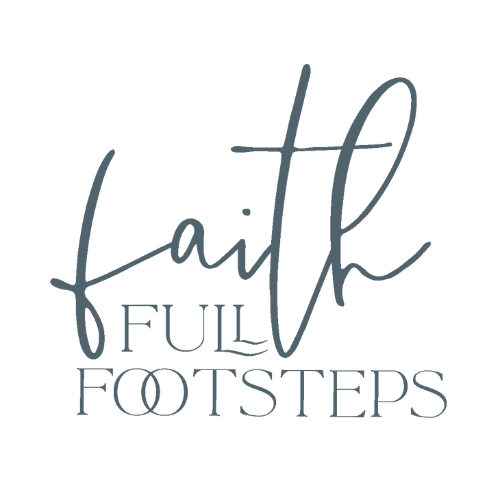I would venture to say that for most of us, the problem isn’t finding time to read our Bibles, but learning how to meditate throughout the day on what we read. It is easy to sit down and read the assigned portion of Scripture for the day, check it off of the list, and not think about it again until we open up our Bibles the next day. And this makes us feel like we aren’t really getting anything out of our time in the Word.
Throughout the years, I have come across several Bible study techniques that don’t take up a lot of extra time but can keep me focused on my Scripture reading throughout the rest of the day. Some of these may not be new to you, but it never hurts to be reminded, right? Let’s unpack four of these methods.
Bible Study Technique 1: Paraphrase the Passage
This method has been practiced for centuries, and has only fallen out of practice in modern day. But it is one of my favorite ways to begin the study of a passage. I even included a paraphrase section in my Bible study workbook. To paraphrase is to put someone else’s words into your own. So the idea here is simple: read the passage and rewrite in your own words, incorporating your own style.
In an effort to add female voices to the canon of literature, researchers and historians have had to resort to publishing private writing of women throughout the years. What they have found is that many women used this technique to learn Scripture, make application, and practice their writing. So this is not a new practice. In fact, as a literature teacher, this was an activity I assigned to my college students.
I get a few objections to this practice, specifically a concern for “adding to” or “taking away” from Scripture, as the Bible strictly commands us not to do (Deuteronomy 4:2, Revelation 22:18-19). However, I would argue that this is simply a Bible study tool and is not intended to be read by others or, even less, published for the public at large. And this argument coming from my students probably had more to do with taking the time and energy to complete the assignment.
The goal is to see if you understand what you’re reading. If you can rewrite the passage in your own words, not only will it let you know if you get it, but also it will clarify things that you may not have even noticed in a superficial reading. It can be incredibly powerful and continually come to mind as you go about your day.
Also keep in mind that your paraphrase may be wrong, and that’s ok. As you continue digging into the passage, you may discover that what you thought it was saying is not at all what it meant. This should be encouraging as it shows you are growing in discernment!
Bible Study Technique 2: Map the Passage
Another technique I often use is mapping. This is especially helpful if you are a visual learner. There are many ideas behind mapping, but essentially it is creating a visual of the passage. I especially like to map sections of Scripture that are long and confusing, often containing multiple lists before coming to the end of the sentence (Paul loved to write this way!)
This might be done by drawing bubbles on a page with arrows to other bubbles that contain supporting or following ideas. It can also be an outline-style rewrite of the passage you type up on your computer. Or it could be a beautifully and artfully done word study. There are no rules.
Much like the paraphrase, the idea is to dig into the passage a little more and clarify what it means. It can help you see patterns the author included, grammatical construction (if you’re a language nerd like me), or even highlight explanations you didn’t recognize at first. And this visual should come to mind, bringing the meaning of the passage you studied to the forefront as you head to work, change diapers, prepare dinner, etc.
Bible Study Technique 3: Do Word Studies
One of my favorite Bible study techniques is doing word studies. A word study is simply researching a specific word you come across. It may include etymology of the word, pronunciation, and part of speech. Often you will find that there are many possible meanings of the word, just as we see in our English dictionaries.
When I find a repeated word or there is a word used that causes confusion, I dig into it. I want to know if something is lost in translation, if the word can have multiple meanings, and where the word shows up in other places in Scripture. This always helps me get a more complete sense of the word.
For example, in my study of the book of Ecclesiastes, I dug into the word translated “vanity” as it recurs so frequently throughout the the book. In Genesis 6:6, I looked up the word that is translated “regretted” because it didn’t click with what I know to be true about God. I frequently do word studies and share them with the Bible Study Academy.
My favorite resource for word studies is blueletterbible.com. It allows me to look up each word individually, providing all of the definition options, showing how many times each different translation is used, and even listing every verse in Scripture where that word appears. But there are other Bible dictionaries you may find helpful, especially if you would rather research offline.
Again, this method is intended to bring that word to mind as you go about your day. If you put in the effort to study out the word, your brain will bring it back to your thoughts over and over again. And then you’ll start to notice reinforcing ideas in all kinds of places!
Bible Study Technique 4: Memorize Scripture
You may wonder how memorization can be considered a Bible study technique, so let me explain. When you first begin memorizing a passage, you are simply repeating the words, trying to get them stuck in your brain in the right order. But as you repeat the verse(s), you start to think about the words you are reciting. And little by little, you’ll find that the verse takes on its meaning rather than just being a series of words you’re repeating.
I have found that I am encouraged by a passage that comes to mind just when I need it even though it has been a long time since I memorized it. This is truly meditating on God’s Word! And it is amazing when you can relate a passage you know to something you never expected to be relevant.
My favorite technique for memorizing Scripture is the FLOW (First Letter Of the Word) method. I explain it and the reason Scripture memorization is important in this blog post. Using this method allows me to come back to the passage repeatedly throughout the day and practice it.
If you are struggling to meditate on God’s Word once you have checked off your list and closed your Bible, I encourage you to try one of these techniques. This, of course, is not an exhaustive list; there are so many study methods we could discuss, but it is a great place to start if you just need a little direction.
If you have a favorite technique, please tell me in the comments so we can learn from each other! And if you try one of these techniques and love your results, please let me know.
If you would like to learn more about how to study the Bible, I invite you to download my FREE Bible study workbook, 6 Steps to Study the Bible on Your Own, at the button below.
If you would like to join a group of like-minded women who are pursuing godliness together, check out the Bible Study Academy by clicking the button below.






Great advice! One more to maybe add to the list is listening to an audio Bible while following along. Seeing the Word while hearing it really helps with comprehension as well as it gives me something to think back to- sort of in the same way I’ll replay a conversation with someone.
Yes, this is another great technique!